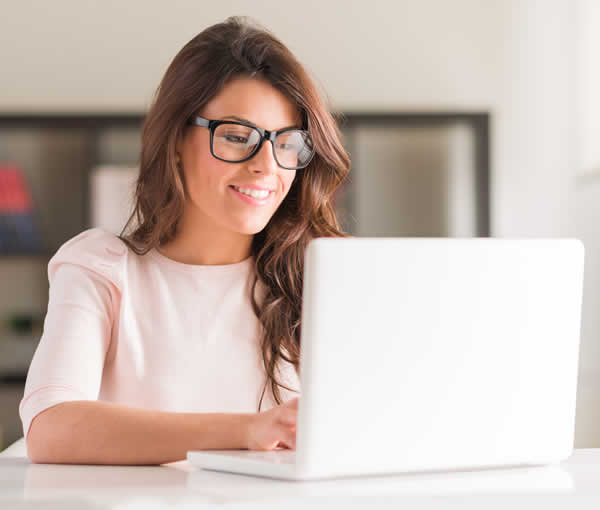Materials
- Text - 461 pages
- Video - 45 minutes
- Reference Guide - Prenatal Guide for Massage Therapists
- Multiple-choice test
- Certificate upon completion
Description
This advanced prenatal course offers a comprehensive guide to all aspects of prenatal, labor and postpartum care. Through the course text and video by Elaine Stillerman, LMT, a detailed review of the anatomy and physiology of childbirth is provided as well as common complaints and serious health conditions that often present during gestation and childbirth. Massage therapists benefit from a complete understanding of the dynamic and miraculous changes the pregnant client's body goes through as she progresses in her pregnancy. In addition to detailed positioning and draping methods, this course discusses Swedish massage and acupressure points, myofascial release, lymphatic drainage and reflexology that can assist you in working with the pregnant client.
Through this program you will review various topics related to pregnancy massage, such as:
- The historical relevance of prenatal massage and childbirth practices.
- How miscarriages occur and their causes.
- Stresses on mother and unborn child and how massage therapy can reduce those stresses for both mother and fetus and beneficial physiological effects of prenatal massage in reducing pain.
- Comfortable and safe positioning for the pregnant client during each trimester as well as proper draping.
- The differences between working with non-pregnant and pregnant clients - set-up of treatment room, practitioner body mechanics, time allocation per treatment, safe use of essential oils and massage oils, additional supplies needed for a prenatal practice.
- Signs and significance of spousal abuse or domestic violence during pregnancy.
- Stages of fetal development and the physiological adaptations during pregnancy to the musculoskeletal system, including the core muscles, the cardiovascular system which supports the maternal metabolism, and the respiratory, gastrointestinal, urinary, reproductive, endocrine, neurological and integumentary systems.
- Assessments for the symptoms of thromboembolism, preeclampsia, and other pregnancy related conditions.
- Contraindications of acupressure and reflex points.
- Factors contributing to low-, moderate-, and high-risk pregnancies and how that impacts massage therapy treatments.
- Protocols relating to treatment of clients confined to bed rest.
- Physiological changes to mother and fetus during the three trimesters as well as common complaints and massage therapy considerations by trimester.
- Bodywork techniques for the common discomforts of pregnancy: backaches, breast soreness, headaches, leg cramps, sciatica, symphysis pubis separation, abdominal pressure, constipation, esophageal reflux, fatigue, heartburn, hemorrhoids, insomnia, morning sickness and varicose veins.
- Techniques to start or speed up a prolonged labor.
- Appropriate massage therapy techniques to be used during each stage of labor.
- The dynamic physiological processes that occur after labor; within the first few hours, within days, and within weeks of postpartum recovery.
- Massage techniques that are appropriate during each stage of the postpartum recovery time period.
- The grief and bereavement process of women who suffered miscarriages or stillbirths.
- Examples of effective marketing techniques to use in building a prenatal massage practice.
Course Objectives
- Summarize the historical relevance of prenatal massage and childbirth practices.
- Recognize the stresses on the mother and unborn child and discuss how massage therapy can reduce those stresses in both the mother and fetus.
- Identify the beneficial physiological effects of prenatal massage in reducing pain.
- Explain how miscarriages occur and what causes them.
- Demonstrate appropriate touch for abdominal massage and feet and leg techniques.
- Perform comfortable and safe positioning for the pregnant client during each trimester.
- Demonstrate draping for the client, safely turning the client on the table and moving the client on and off the table safely and easily.
- Differentiate between working with non-pregnant and pregnant clients.
- Demonstrate the set-up of treatment room, practitioner body mechanics, time allocation per treatment, safe use of essential oils and massage oils, additional supplies needed for a prenatal practice.
- Perform pretreatment evaluations to be done with a pregnant client.
- Predict the cultural and emotional impact on the woman as her body changes.
- Recognize the signs of depression during pregnancy.
- Identify the signs of and explain the significance of spousal abuse or domestic violence during pregnancy.
- Differentiate between the stages of fetal development and the physiological adaptations during pregnancy to the musculoskeletal system, including the core muscles, the cardiovascular system which supports the maternal metabolism, and the respiratory, gastrointestinal, urinary, reproductive, endocrine, neurological and integumentary systems.
- Assess for the symptoms of thromboembolism, preeclampsia, and other pregnancy related conditions.
- Explain the contraindications of acupuncture and reflex points.
- Summarize the factors of low-, moderate-, and high-risk pregnancies and how that impacts massage therapy treatments.
- Demonstrate the protocol of treating clients confined to bed rest.
- Compile ways to support a client who is trying to become pregnant.
- Recognize the physiological changes to mother and fetus during the first trimester as well as the common complaints and massage therapy considerations during that time.
- State the physiological changes to mother and fetus during the second trimester as well as the common complaints and massage therapy considerations during that time.
- Recognize the physiological changes to mother and fetus during the third trimester as well as the common complaints and massage therapy considerations during that time.
- Identify pre-labor physical changes and explain the importance of perineal massage and Kegel exercises.
- Demonstrate appropriate bodywork techniques for the common discomforts of pregnancy such as backaches, breast soreness, headaches, leg cramps, sciatica, symphysis pubis separation, abdominal pressure, constipation, esophageal reflux, fatigue, heartburn, hemorrhoids, insomnia, morning sickness and varicose veins.
- Express the physiology of multiples pregnancies and recognize the risk factors.
- Name the physiological stages of labor and the factors involved in cesarean section.
- Discuss the effects of epidural anesthesia.
- Demonstrate the techniques to start or speed up a prolonged labor.
- Demonstrate appropriate massage therapy techniques to be used during each stage of labor.
- Identify the dynamic physiological processes that occur after labor; within the first few hours, within days, and within weeks of postpartum recovery.
- Demonstrate the massage techniques that are appropriate during each stage of the postpartum recovery time period.
- Explain the recovery process for women who have had a vaginal birth vs. a cesarean section.
- Paraphrase the grief and bereavement process of women who suffered miscarriages or stillbirths.
- Predict the process of role adjustment for the mother and adjustment for the whole family.
- Give examples of effective marketing techniques to use in building a prenatal massage practice.
Course Reviews
Stephanie LeMaire, LMT
3/9/2025
Lynsey Fulmer, LMT
3/8/2025
Mackenzie Ritchison, LMT
3/6/2025
Zarah Waddell, LMT
2/7/2025
Lezley M LeBlanc, LMT
1/31/2025
Read more reviews
Instructors

Leslie DeMatteo, MS, LMT
Leslie L. DeMatteo, LMT, MS, has been an active massage therapist since 1998, after graduating from the Sarasota School of Massage Therapy in Sarasota, FL. There she completed the massage therapy program along with a certificate program in Nuad-Bo-Rarn: Traditional Massage of Thailand.
Since then, she has completed continuing education in cranial-sacral fundamentals, cancer and mastectomy massage, reflexology, trigger point therapy and prenatal massage. She is also certified by the National Certification Board for Therapeutic Massage and Bodywork (NCBTMB) and is a Professional Level member of Associated Bodywork and Massage Professionals (ABMP).
Her work in massage therapy continuing education and teaching in a massage school ignited a passion for adult training and education, which led her to pursue her Bachelor's Degree in Adult Learning: Vocational Instruction, followed by her a Master's Degree in Adult Learning.
Ms. DeMatteo is the instructor for many of the Institute's courses including such courses as Advanced Prenatal Massage, Ethics of Diversity. Cupping Therapy: A Step-by-Step Approach, Diversity: Cultural Competence, Mastering Pregnancy Massage, and many more.
Back to Top



